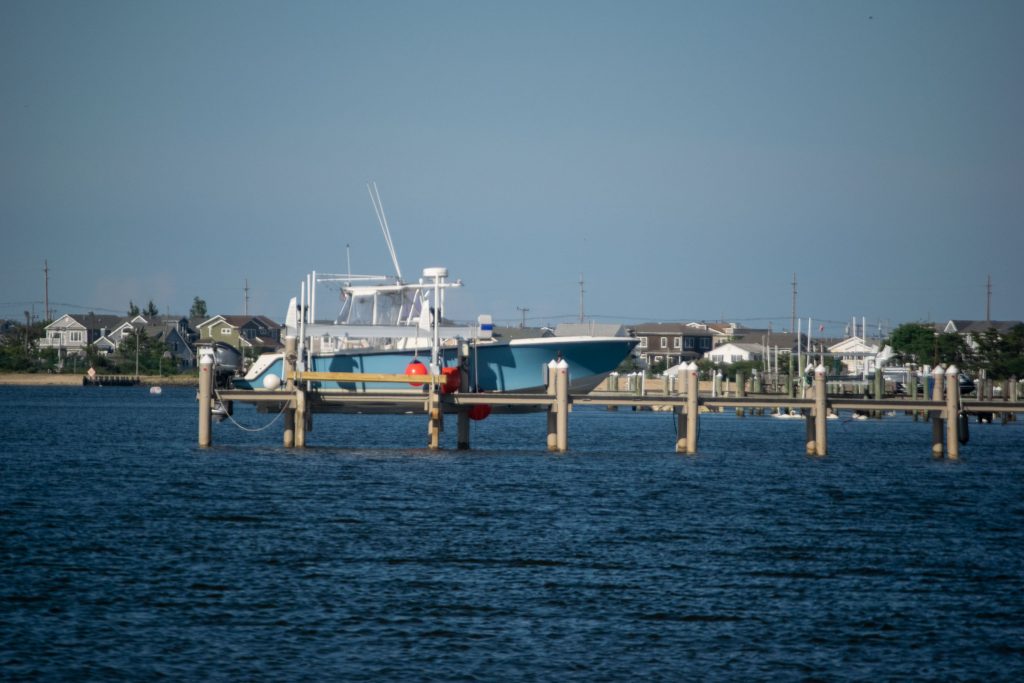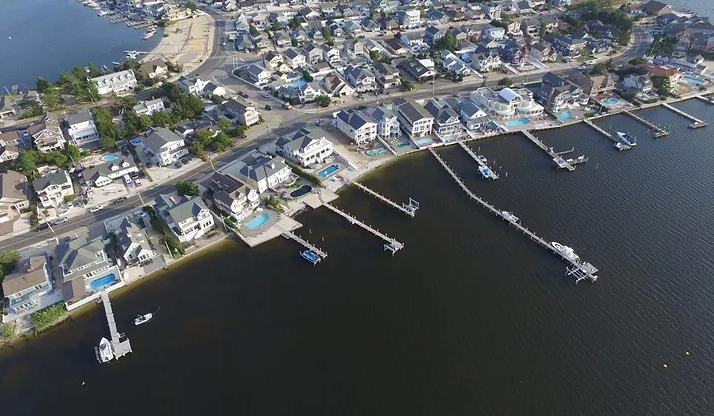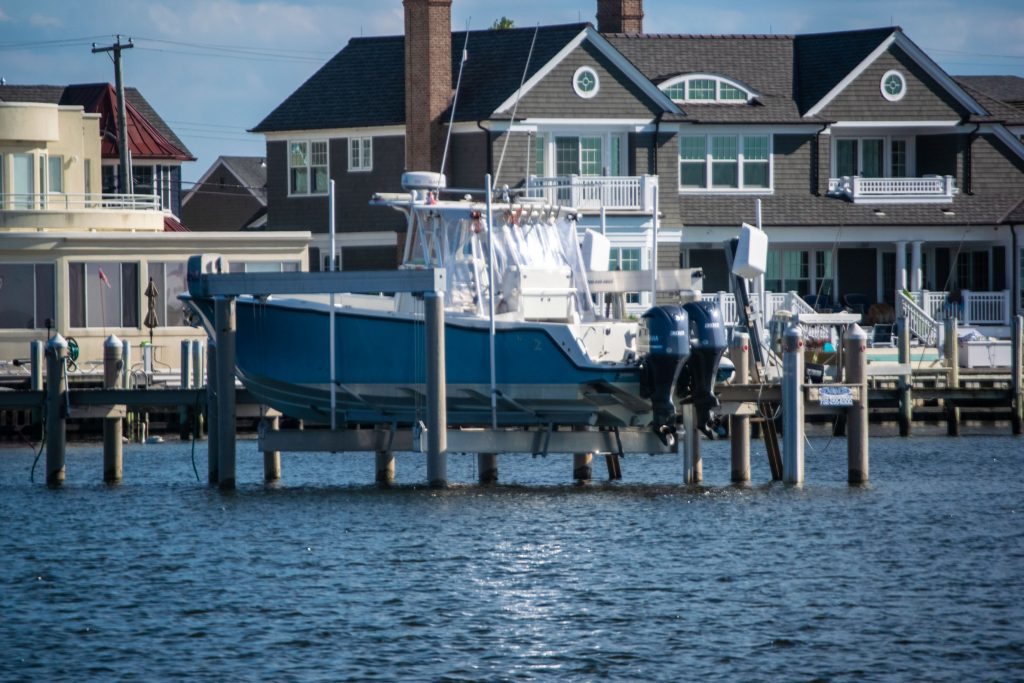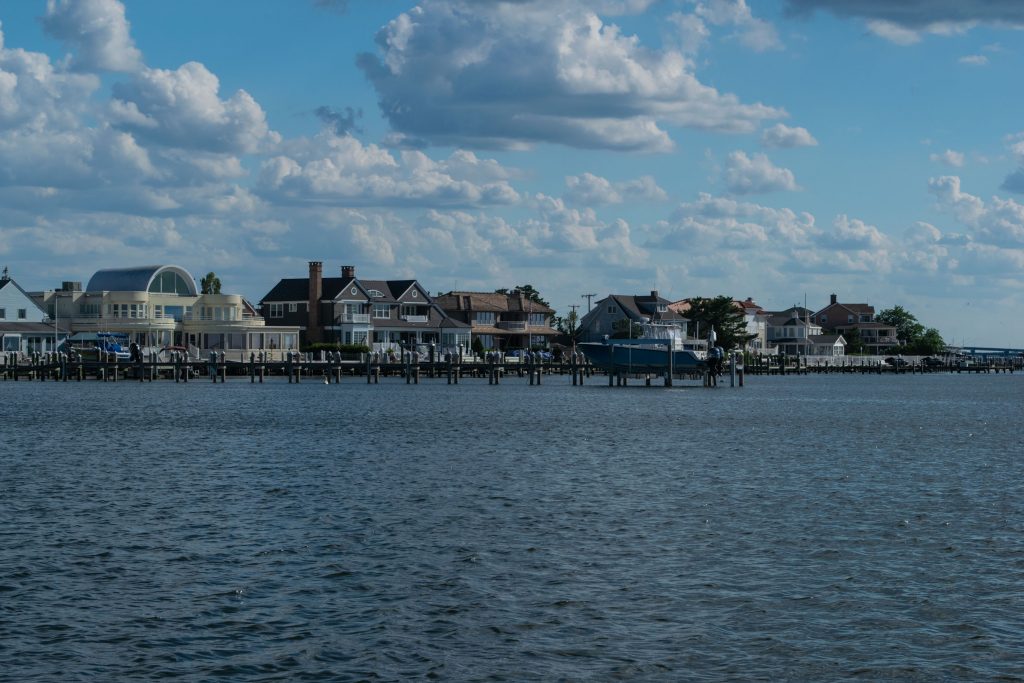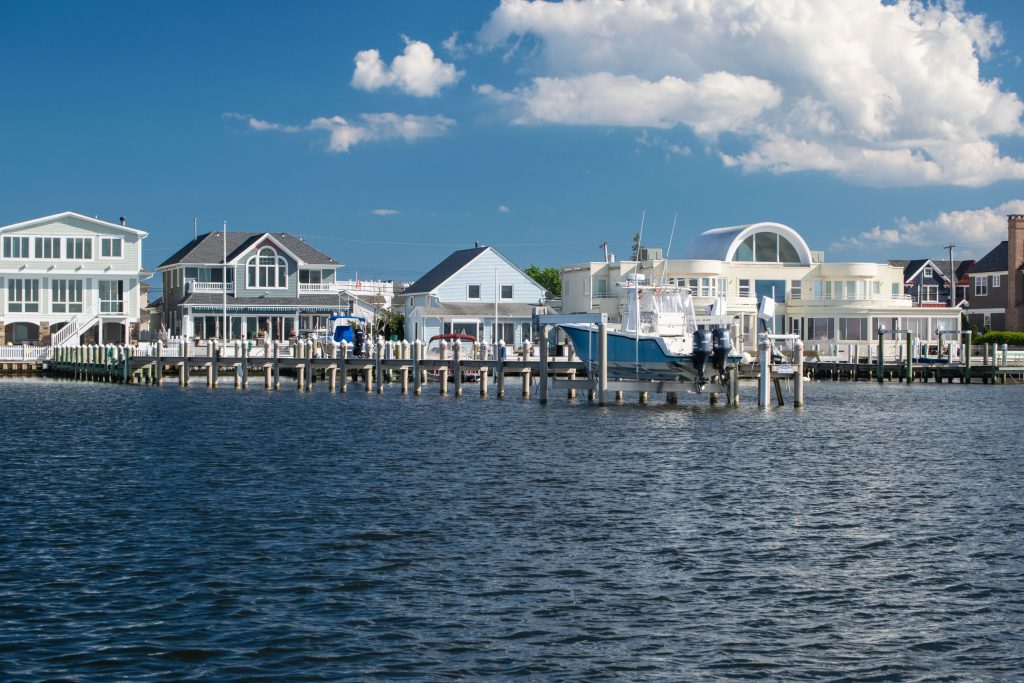Waterfront homeowners often pay a great deal in taxes to reap the rewards of convenience – instant, on-site access to the water and their boats, but an action brought by Lavallette homeowners asks at what point there is too much, literally, of a good thing.
The dispute over the length of a 341-foot dock built at 83 Pershing Boulevard, on West Point Island, dates back to 2017. It was first brought up at a borough council meeting where one councilwoman noticed that docks were getting longer and longer, and were affecting the views of others and potentially extending far enough out into Barnegat Bay that they could pose a hazard to vessels. The borough looked into whether they could regulate the length of docks or require lighting at the end of the docks, but both measures would have been superseded by state and federal regulations.
After officials looked into the matter, they found something surprising: the state Department of Environmental Protection was behind the ever-growing dock lengths under a Bureau of Tidelands Management administrative rule that requires four feet of depth below any dock at which boat will be moored. The reason behind the regulation is to protect submerged aquatic vegetation that grows on the bottom of the bay and can purportedly be negatively affected by the presence of a moored boat. But in order to reach the four foot depth, docks needed to be built farther and farther out into the bay. Now, attorneys hired by residents on both sides of the issue are asking the state Department of Environmental Protection to rule in their favor as to whether the dock should stay or go. A group of homeowners, including actor Joe Pesci, wrote letters to the state urging the Tidelands Resource Council to declare that the existing dock at 83 Pershing is built in contravention of state regulations and it should be removed. The attorney for the homeowner said his client was told to build his dock to the 341-foot length, which cost more money than he planned to spend, and that the rule protecting submerged vegetation is in the best interest of the Jersey Shore’s ecology.
“I’m hoping that they remove the offending structure,” said attorney Phllip G. Mylod, who is representing neighboring homeowners. “There was a pre-existing dock there for many years. There was navigation, albeit in shallow waters, to the channel. The only reason we’re dealing with a dock extension is because [the new owner] wanted a bigger boat.”
On a recent drive past the property from the water, a large Grady White boat is seated on a lift at the end of the dock, which runs straight into the bay for about 200 feet before it dog-legs toward the final third.
Neighbors have written letters to the state arguing that the growing length of docks place other boaters at risk by having objects jutting out farther from shore, encroaching on the navigational channel – hence the “dog leg” shape. But kayakers, those in canoes and other small vessels are often forced into the active navigation channel, they say, creating a potential safety hazard.
Then, there is the shear size of the dock.
“More than doubling the length of these docks undoubtedly would block views of the bay currently enjoyed by other homeowners,” Pesci wrote in a letter to Mylod, which will be entered as an exhibit before the state.
Pesci also said the expanding dock sizes “negatively impact the routes that boats travel when navigating the bay and [make] the bay less safe.”
Mylod, who is representing Janine Morris, a 35-year resident of West Point Island, said riparian rights or grants – the legal doctrine that allows waterfront property owners to build over to the water – cannot be an unlimited distance. The dock, he argues, may come too close to, or even encroach within, the navigable channel and must come down. But even if the council rules homeowners do have the ability to build out to the channel, the dog-leg portion of the dock encroaches on a neighbor’s property and, likewise, must be removed.
“If Tidelands agree that we have rights that go to the navigable channel, the application from its inception is void as a matter of law and must be stricken,” Mylod said.
He also argues there is a “pierhead line” established that cannot be crossed.
“We would have no trouble, and we would not object, if the dock was put back to its pre-existing condition,” he said.
Neil Yoskin, the attorney for P.T. Jibsail LLC, the owner of 83 Pershing, said his clients simply built the dock they were required to build.
“They did what everybody else did – they got a license from the Tidelands Resource Council to build a dock, and they built a dock,” said Yoskin. “It’s not like my client wanted to build a dock that long.”
The state, he said, suggested the dog-leg style so all homeowners’ docks could reach the DEP’s four-foot depth requirement – a plan that would actually benefit neighbors.
“The reason for [the dog-leg] is that the shoreline swings out, so if everybody got a dock going out to four feet, they would all collide with each other,” said Yoskin.
“The argument that the neighbors are making is that the rights that riparian landowners have in adjacent waters extends out to some in-determinant point,” he continued. “There is a statute that gives riparian owners a first right of refusal to either purchase, lease or get a license for the tidally-flowed waters immediately adjacent to their land.”
Janine Morris, the neighboring homeowner represented by Mylod, said she simply wants to neighborhood to retain what she sees as a safe amount of dock space and to prevent the proliferation of docks that grow longer and longer out into the bay. It’s also had a damaging effect on her own boating activities, she said.
“It has inhibited our boating rights (pending the tide) along with our outside visitors with larger watercrafts who can no longer navigate around this monstrosity of a structure to reach our dock,” Morris said. “It has been extremely frustrating having to deal with the bureaucracy and the somewhat indifference of our private property rights.”
Yoskin holds that the state’s rules are in place for a reason. All agree the case will set a precedent that will be felt by every waterfront community in New Jersey.
“By and large, I think the DEP’s regulations are always well-intended, although there are sometimes unintended consequences,” Yoskin said.

Advertisement

Police, Fire & Courts
Cops: Juvenile Arrested After 118mph Joy Ride in Seaside Heights, Toms River Kills 2

Seaside Heights & Seaside Park
Seaside Heights Mourns Passing of Boardwalk Legend, Still Working Into His 90s

